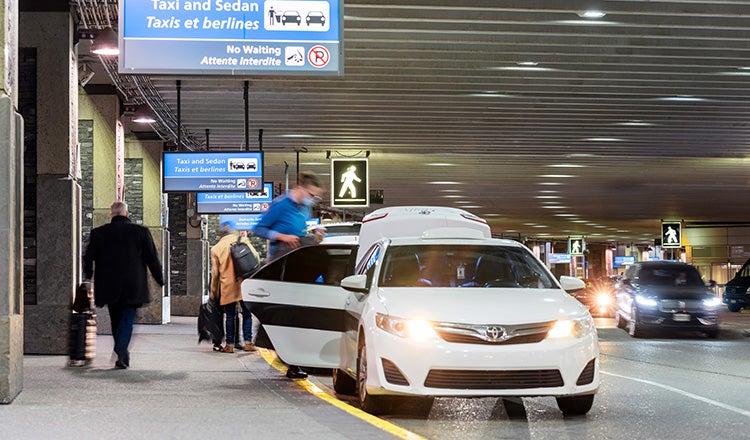YYC Calgary Airport Ground Transportation Study

YYC Calgary Airport Ground Transportation Study
Taking a Pioneering Look at the Electric Vehicle Future at One of Canada’s Biggest Airports
YYC Calgary International Airport is one of the busiest airports in Canada. Like most mid-sized airports, its ground transportation operations significantly impact the airport and two onsite business parks.
As input into capital planning, the Calgary Airport Authority undertook a ground transportation study to assess commercial traffic throughout, on and off the airport campus, considering business model changes, technologies, and fee structures over a 20-year horizon to improve efficiency, lower operating costs and maximize revenue opportunities.
HDR, in collaboration with Associated Engineering Alberta, considered YYC’s strategic objectives and the sources of data readily available for analysis to focus the study on three key areas of ground transportation operations:
- Electric vehicle feasibility study
- Commercial vehicle monitoring system
- Campuswide shuttle operations, including hotels in immediate proximity
Electric Vehicles are the Future
Societies are increasingly aware of the impact of greenhouse gas emissions on our world which motivates a shift toward using electric vehicles. YYC has a plethora of vehicles that can be electrified and, therefore, could require supporting electric vehicle supply equipment, or EVSE.
HDR led the comprehensive EV feasibility study, a first-of-its-kind study for a Canadian airport given YYC’s strong commitment to reduction of greenhouse gas emissions as articulated in its Climate Action Plan. The study addressed both landside and airside EV uses — looking at vehicle fleets, projecting power consumptions, and forecasting operational changes for the airport, infrastructure, and processes to accommodate EV usage throughout the airport campus.
The EV study addressed EVSE needs to support a shift for both landside ground transportation (parking, rental cars, shuttles) and limited airside operations (fueling vehicles, tugs). The study began by examining seven North American airports to understand their challenges, lessons learned and proven strategies for addressing emissions. The study then developed estimated power requirements for each area/activity at YYC (from airside ground service equipment to landside operations of private and commercial vehicles), assuming full buildout of necessary EVSE. Those power requirements provided a basis for estimating configurations and capital costs of the necessary charging infrastructure. Options for on-site generation were addressed. An implementation timeline addressed possible business models for delivering the infrastructure.

Commercial Vehicles Satisfy Traveler Needs and Generate Revenue Streams
The commercial vehicle monitoring system study assessed market-available technologies for ground transportation that could improve efficiency and lower operating costs. Focus areas included automating taxi and rideshare operations for arrivals and departures, and campuswide tolling for commercial traffic such as taxis, shuttles and sedans. Analyses addressed projected growth rates of traffic, costs of enabling technologies, and projected revenue streams. The business case model was delivered to allow the authority to conduct sensitivity analysis to explore scenarios.
The study recommended implementing new technologies at the main terminal and throughout the airport campus. Fifteen projects were defined and cost-estimated by providing varying applicable technology options, from 2023-2029, to phase in improvements supporting the three primary areas of focus:
- Taxi curbside management, including revenue collection,
- Taxi dispatch, holding areas and campus wide monitoring, and
- Bus/shuttle dispatch and operations.
Shuttle Service Can Improve Passenger Experience Sustainably
The campus shuttle study explored the concept of a common hotel shuttle program that could reduce shuttle volumes (and therefore emissions) while providing a higher quality of user experience. Shuttle services at 25 North American airports were examined to identify best practices. A situation analysis was conducted to understand existing shuttle operations at YYC. Technologies were studied including onboard and wayside (at bus shelters or destinations along the route) solutions. All of this data supported a proposed program of campus-wide shuttles to serve 21 hotels using six routes. The proposed program mapped out routes and included a business model with operating estimates.
Continuing Toward a Sustainable Future
The Calgary Airport Authority is a leader in environmental stewardship, committed to protecting the environment and implementing leading edge initiatives and technologies. With HDR’s support on the Ground Transportation Study, YYC continues progress toward its vision as “an environmentally and socially responsible organization that adds value to the aviation sector and our community by putting sustainability at the heart of every decision.”







